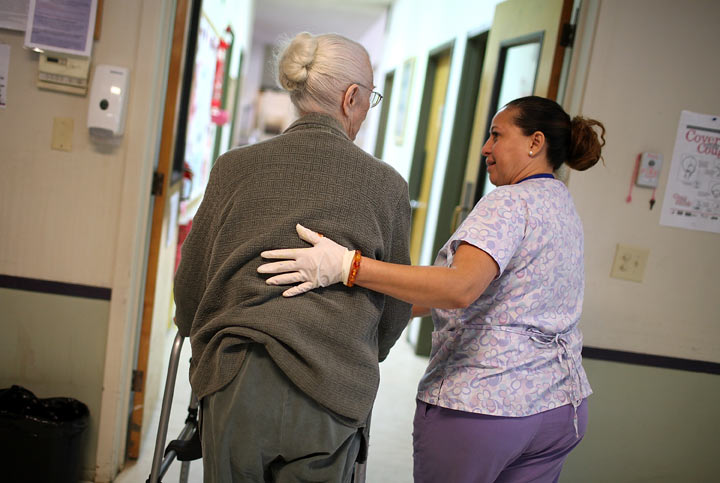TORONTO – Ontario’s Liberal government is promising a “top to bottom” review of the way it delivers home- and community-based health care following a critical report from the province’s auditor general.

The government “needs to take a hard look” at the $2.4 billion spent annually by community care access centres, which co-ordinate care and supports for about 700,000 patients outside of hospitals, said auditor general Bonnie Lysyk.
“We found that the service delivery system needs change,” said Lysyk. “Our audit confirmed that the current service delivery model is contributing to varying levels of service across the province.”
READ MORE: Ontario moves to self-directed funding model for home and community care
Eligibility criteria for complex care patients discharged from hospital vary from one community care access centre (CCAC) to the next, and nearly half the people don’t get treatment within 24 hours of going home as required, added Lysyk.
“The CCACs also need to work harder to standardize care so that patients with similar conditions are consistently treated using agreed upon best practices, regardless of where they live,” she said.
“Unfortunately, there are no standard care protocols in use throughout the system.”
Health Minister Eric Hoskins said he would implement all of the auditor’s recommendations on reviewing community care access centres and how they provide home care.
“She points out not only inconsistencies across the province and within individual CCACs, but also contractual variances in terms of the amount of money paid to various health care professionals,” said Hoskins. “She’s asked us to review the service delivery model, and I understand that as reviewing the system from top to bottom.”
The auditor disputed the CCAC’s claims that 92 per cent of their spending goes to direct patient care, and said it’s closer to 61 per cent when you define it as face-to-face treatment. It’s about 72 per cent if you include the costs of co-ordinating patient services, but there may be savings in that 61-to-72 per cent range, said Lysyk.
“We don’t know what that right percentage is because when we looked at care co-ordinators and whether they were operating cost effectively, there’s not a lot of data that was available for us to assess,” she said.
READ MORE: Ontario invests $75 million to cut wait times for home care to 5 days
Lysyk said the costs-per-client-served by CCAC’s range between $2,892 and $3,775, and nurses they directly employ for some programs are paid up to $15 an hour more than nurses at the service agencies that they use.
Ontario’s 14 community care access centres have 264 contracts with 160 third-party providers, including private companies and non-profit organizations, but the auditor said they pay inconsistent rates for contracted services.
“One provider of personal support services charged $48.98 per hour in one geographic area and $29.50 per hour in another geographic area within the same CCAC,” wrote Lysyk. “In all, there are 14,000 distinct contracted rates for 94 different service categories.”
The New Democrats said the problems started 20 years ago when the then-Conservative government created the CCAC’s and invited private companies to bid on services that until then had been provided by non-profit organizations.
“The private sector was going to provide home care better, cheaper, faster than the not-for-profits that had been doing it for decades,” said NDP health critic France Gelinas.
“This experiment has failed. Bringing in the for-profit sector brought us a broken health care system.”
The Progressive Conservatives were surprised to find that 47 per cent of patients are not being seen at home within 24 hours of being discharged.
“If they’re not getting that care at home they’re more likely heading back to hospital, which is just increasing the costs ,” said PC health critic Jeff Yurek.
Both opposition parties said trying to help constituents access home-care services is the biggest issue every MPP has to deal with.



Comments